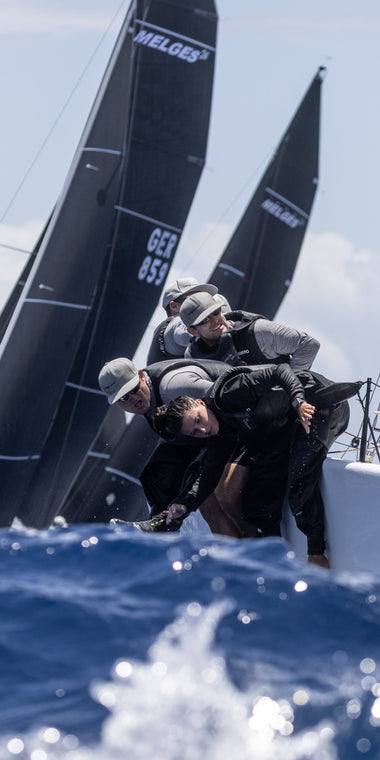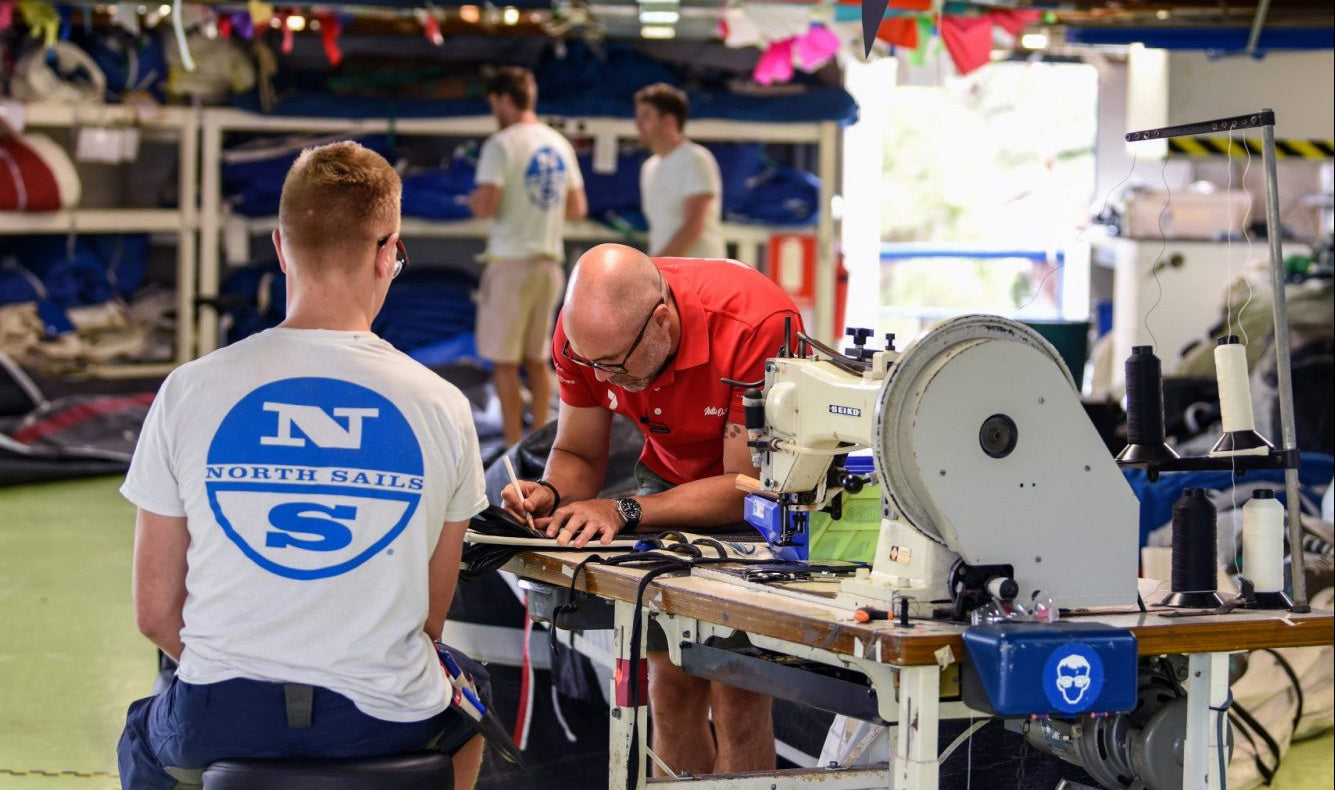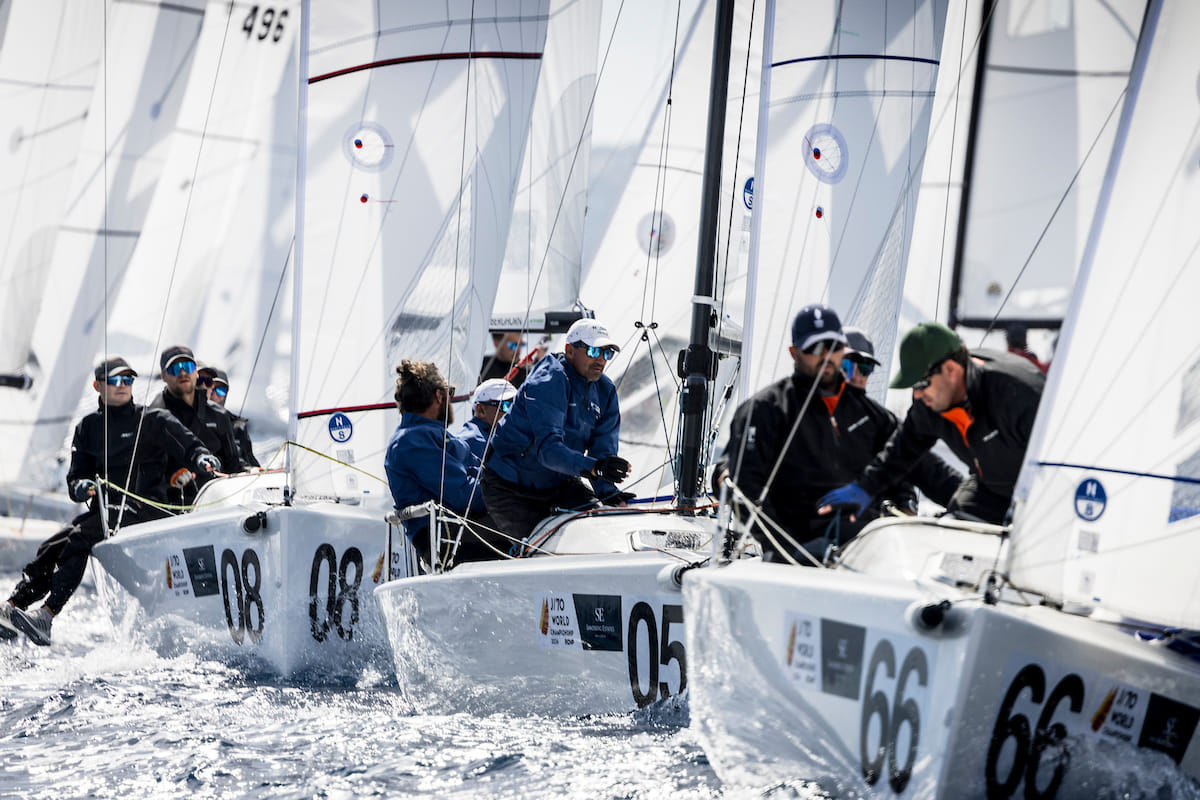STRENGTHENING YOUR SAILS FOR THE SYDNEY HOBART YACHT RACE
STRENGTHENING YOUR SAILS FOR THE SYDNEY HOBART YACHT RACE
How To Maintain Your Sail Inventory For The Offshore Racing Season Ahead

Preparing for the Sydney to Hobart Yacht Race is a bit different to any other event due to the nature of the type of conditions and weather the race can present. Whether you’re racing in each lead up race possible, or using the race to tick off the bucket list item, making sure your sail inventory is in good condition can have a big impact on your race.
North Sails Expert and Service Manager, Nick Beaudoin, has a wealth of experience when it comes to sail planning and servicing. And the key to ensuring your sails aren’t going to let you down, is preparation.
“The thing with the Sydney Hobart, is that the fleet tends to also be doing the Blue Water Pointscore, so the service preparation actually starts in October for most of the fleet.” comments Nick. “What we recommend is to keep the maintenance up while they’re racing. It’s what we work on over the four months of ironing out all the little details of the inventory and getting the sails ready over that longer period of time. It’s all planned three to four months ahead of time, which really is right about now in early October.”
“At the beginning of the season, our North Sails team will start having conversations with customers about the sail services they may need for the offshore season ahead. It could be jib recuts, main recuts, IRC remeasuring, spinnaker flying checkovers to repair tears, all the little things. It’s about dialing in the inventory for the individual clients.”

Maintenance Is Key
Sail servicing isn’t just about repairing sail issues, but keeping your sail inventory in good working order to both extend the lifespan of your sails and achieve your best performance on the water.
“Most of our customers know how we operate, so they’re very familiar with the process – every race week they’ll get their sails in, we’ll do a service, see if they have any issues, and we go forward from there with enough lead time. The maintenance comes down to essentially a weekly thing for them.”
North Sails offers a one week turnaround at the major yacht clubs in Sydney, when every Monday the team collects the sails in the North Sails lockers at Cruising Yacht Club of Australia, Middle Harbour Yacht Club, Royal Sydney Yacht Squadron and Royal Prince Alfred Yacht Club. The team then conducts general maintenance and repairs during the week, and delivers them back to the yacht clubs on the Friday.
“We like the Blue Water Pointscore, as it’s one race per month where we can assess what each yacht needs pre and post-race. The sails will come in that have any repairs needed, or need to get looked at if you’re unsure. For the majority of the fleet, it’s very hard to pull their sails out unless there’s a park or somewhere they can go with enough space to do it.”
Jibs In Working Order
With the range of conditions and sail changes to be expected during an offshore race, jibs can endure a lot of wear and tear over time. However, Nick has some essential tips to extend the life of your jibs, to keep the luff tapes in good condition, check the battens and batten tension.
“As it’s not always easy to just pull your sails out on any given day for maintenance checks, it’s about crews being very observant when using the sails. Having your crew conscious of the shape and condition of the inventory, especially your foredeck team being conscious of the sails if they notice anything, luff tape damage, battens on the jibs, or if they notice any chafe from stanchions or any of the high-wear areas and just keeping an eye on it.”
“We like to encourage jibs to come in for post-race luff tape repairs. It’s a very small thing that can cause a lot of grief, you don’t need your bowman up there mucking around trying to get the headsail plugged in, so we like to stiffen the head and very top of the luff tape so it can’t open up.”
Flying Spinnakers
After the last Blue Water Pointscore race and as the Boxing Day start of the Sydney to Hobart approaches, the timeline for major repairs becomes tighter. Preventing the larger sail issues can be one of the easiest ways to ensure you’ll be on the start line, and spinnaker checkovers are high up Nick’s list of race preparation maintenance tips.
“Again, it’s very hard to assess a sail properly unless you’re pulling it out in the park, and you know exactly what you’re looking for. When we fly a spinnaker, we have two to three people put the sail in the air and look up underneath it, to look for any holes. If you just have the sail on the ground it can be easy to miss things.”
“We’ll also check the tensions on the luff, leach and foot lines, because over the course of the four months of sailing, ropes shrink and most likely need to be eased off and re-tensioned. You’ll find different setups denote different tensions and you evolve as the boat spends more time offshore.”
“Usually the foredeck team has eyes on the sails, as do the trimmers, so just picking up on any potential issues early and getting the sails into the loft to fly, check over, pull out and repair as necessary is a great way to prevent more expensive and possible race-ending damage.”

Maintaining Sail Performance
Committed to helping you maximize your performance with your sail inventory, our North Sails Service team also provides sail recuts and re-measurements.
“A service we offer for 3Di sails is to look at recuts for performance. As sails get older, say two to three years old and it’s been used offshore, it may need a little attention.”
Nick explains their process to restore the sail to peak performance shape, “In jibs and mains, as the sails become round over time, we do slices to reduce the broad seam, and straighten the leach exit. It’s glued and bonded in the same process as when they’re manufacturing 3Di sails, so it’s very very strong, and a simple thing to do to increase performance.”
“Another thing is remeasuring for rating certificates. As we approach the deadline to get your certificate in for the Sydney Hobart, we encourage our clients to get their inventories in to us. Jibs are a big thing as luff tapes shrink over a period of time, as once the luff tape shrinks, the luff actually gets smaller. Leading into Hobart, remeasuring is something we like to offer our customers to improve their overall performance, especially at the pointy end of the fleet.”
Nick says, “Now is the time to be preparing for the Sydney to Hobart. For everyone on board it’s just about making sure that whoever is on the boat, whether it be the owner, helmsman, or crew, they understand they’re part of the team to be aware of the issues.”
“These conversations all start at the beginning of the season, and there’s nothing last minute about the Hobart race!”
Contact your local North Sails Expert to make sure your sails are ready for the offshore season ahead.




























